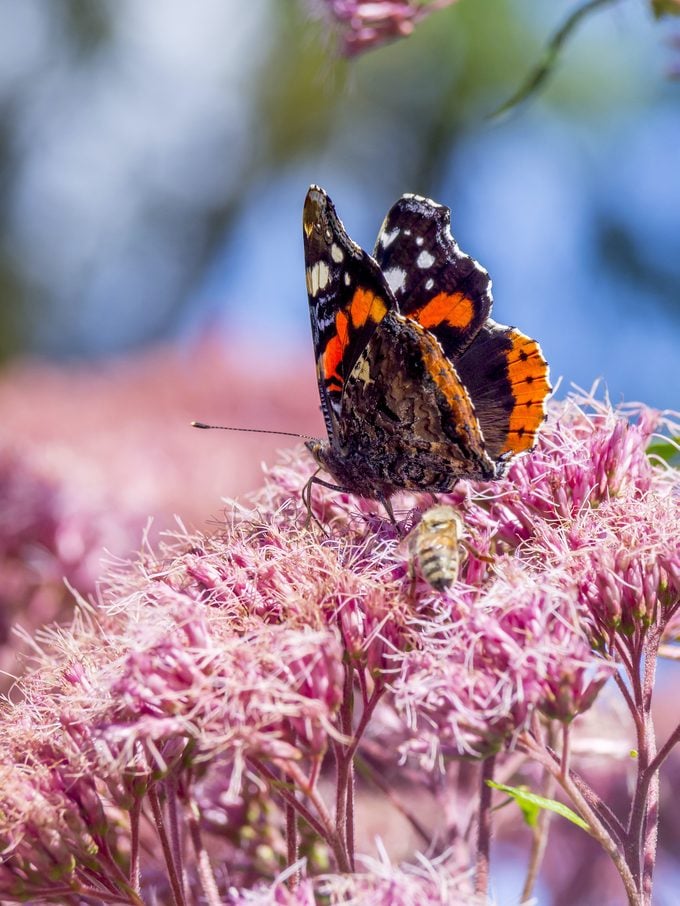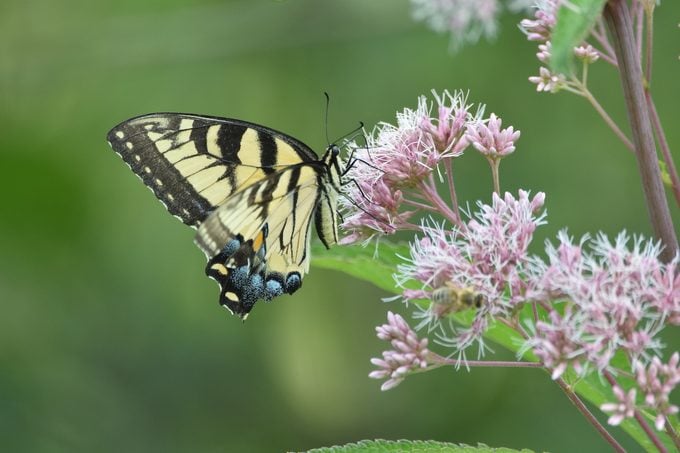Grow Joe Pye Weed for Butterflies and Bees
Updated: Jun. 22, 2023
Learn how to grow and care for Joe Pye weed: a late-blooming fuzzy, fragrant plant that butterflies and bees absolutely love.
Joe Pye Weed Care and Growing Tips

- Common name: Joe Pye weed
- Botanical Name: Eutrochium
- Growing Zones: 4 to 9
- Attracts: Bees, butterflies, moths
- Light needs: Sun or part shade
- Size: 5 to 7 feet tall
- Grown for: Showy pink blooms that smell like vanilla
- Foliage: Lance-shaped dark green leaves
Fortunately for gardeners in rainy areas, Joe Pye weed does well in wet soil. Plant it in sun or part shade in a rain garden or soggy corner, where it’ll flourish. Once the fragrant flowers fade, seed heads offer texture and interest to a winter garden. Make sure to give the plant a good amount of space. It reaches heights of up to 7 feet tall. If you don’t have a ton of space, smaller cultivars are available.
These are the best long-blooming flowers for butterflies and hummingbirds.
Benefits of Growing Joe Pye Weed

There’s a good reason this plant frequently appears on best flowers for butterflies lists. This towering native perennial blooms well into fall, bringing the season’s last butterflies to your yard. Moths and native bees love the fuzzy flowers, too! If you’re interested in butterfly or insect photography, the tall blooms give you a chance to photograph visitors from a new perspective. The blooms give off a faint vanilla scent; colors can range from pink to reddish purple and are eye-catching in the garden.
Learn the pros and cons of growing common milkweed.
Plant Name and History
If you’re curious about the name, there’s been some discrepancy over whether “Joe Pye” was a real person. For many years, botanists couldn’t agree on the source of the name or separate legend from potential fact. In recent years, scholarly study has pointed to a Mohican tribal leader named Joseph Shauquethequeat—who was called “Joe Pye” by nearby colonists—as the man for whom the plant was named. There’s no absolute connection between Shauquethequeat and the plant that would eventually bear his name, but we do know Shauquethequeat had knowledge of tribal medicine.
Next, learn how to grow native butterfly weed for monarchs.




















